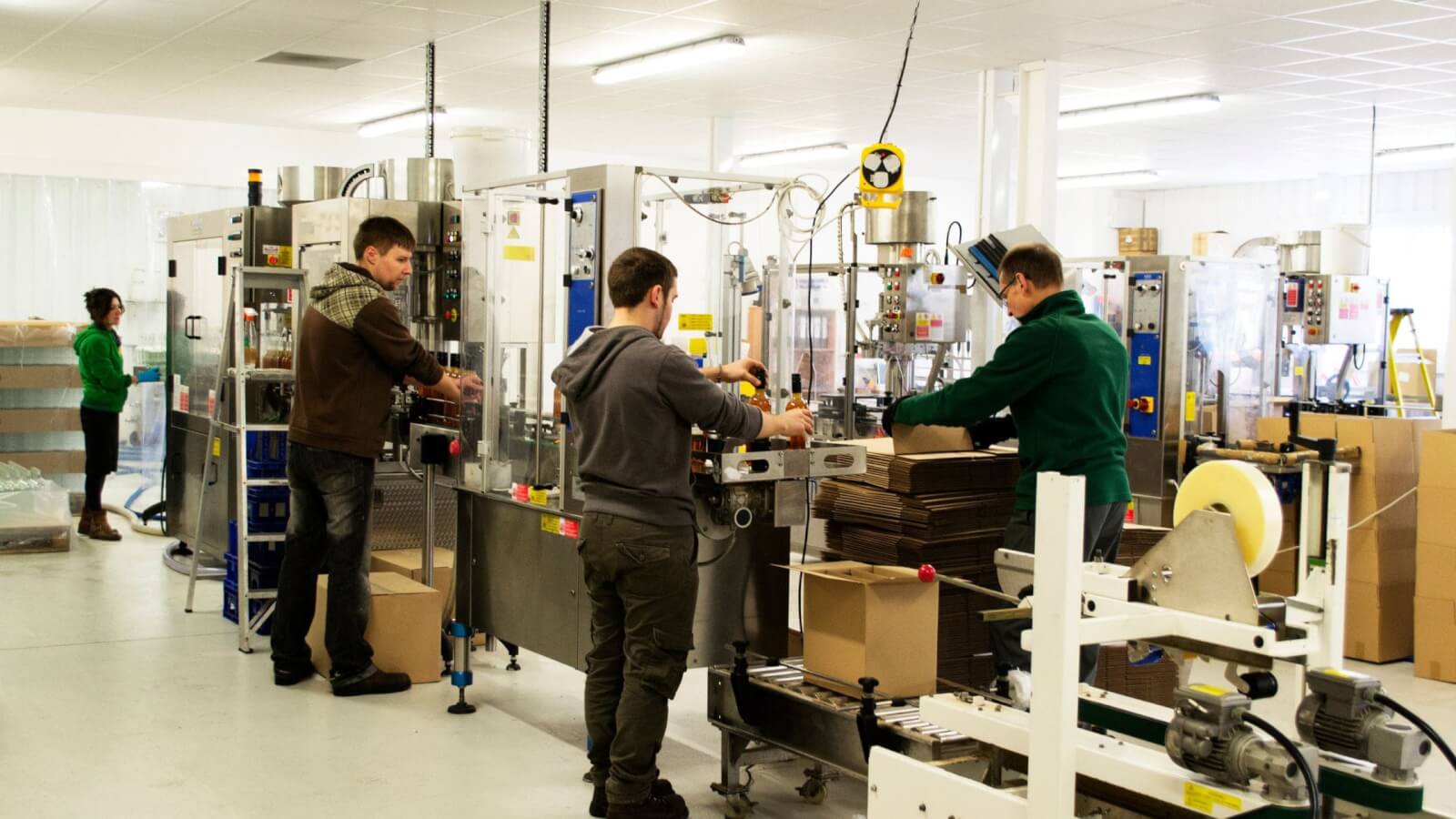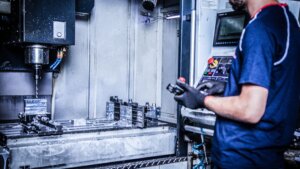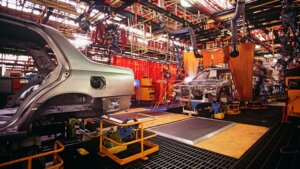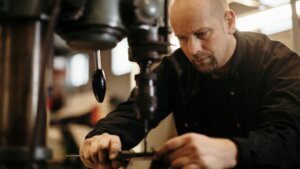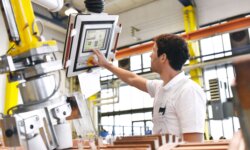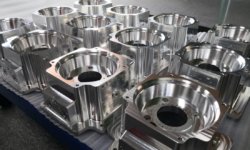Manufacturing is a centuries-old industry. However, the on-demand manufacturing model is quite a recent phenomenon. In a relatively short time, it has quickly become the preferred model in many industries, replacing traditional manufacturing processes.
Due to the popularity of on-demand manufacturing, it is essential to understand the main features of this model in the manufacturing industry, how it works, why it is preferred, its many advantages, and its limitations.
This article explores on-demand manufacturing, explains how it works, and compares it with the traditional manufacturing process.
What is On-Demand Manufacturing?
On-demand mmnufacturing is a type of manufacturing in which products are manufactured only when required and ordered, usually in small quantities. Also known as cloud manufacturing or custom manufacturing, the manufacturing on-demand model differs from the traditional approach in which the manufacturing industry creates products beforehand, anticipating consumer demand.
What Led to the Emergence of On Demand Manufacturing Services?
Several factors led to the evolution of traditional manufacturing into manufacturing on demand. These factors include:
Modern Manufacturing Equipment
In the early days, mass manufacturing used the assembly line production process, which offered no scope for custom manufacturing or low-volume production batches. However, modern manufacturing techniques such as CNC machining and 3D printing have changed the idea of what is possible. They can not only create small-volume production runs but also include any custom manufacturing requirements.
Logistics
The rising demand for e-commerce has transformed the logistics network around the globe and within national borders. There are no limitations to the size of what can be transported, and the transportation speeds have increased manifold. So, with tight supply chain control, customers can receive their orders on a strict schedule whenever needed, eliminating the need for bulk production.
Digital Manufacturing
Digital manufacturing processes help manufacturers identify and eliminate bottlenecks and potential problems. These processes can also improve quality and incorporate changes that users require. Overall, an on-demand production process simultaneously increases productivity and enhances the customer experience.
Industry 4.0
The emergence of Industry 4.0 has also pushed the concept of on-demand manufacturing. With options such as on-demand platforms supplying cloud-based technology, companies are shifting to a new model in which in-house teams can now collaborate virtually, making it easier to create and implement changes.
How Does On-Demand Manufacturing Work?
The items enter the production process after the client places an order. Companies send their orders to the manufacturer after the customers place their orders with the company. Generally, the payment for the products is upfront. The production quantities in the process match those required by the customers.
It may seem like the ideal design for small businesses, but manufacturers in various industries and even large companies like Amazon have adopted this manufacturing business model.
Traditional Manufacturing vs. On-Demand Manufacturing
The manufacturing industry often debates which is the better method between traditional and on-demand manufacturing. Here is a side-by-side comparison of these two methods with the pros and cons of each:
Traditional Manufacturing
In traditional manufacturing, the manufacturer receives a high-volume order. After the production is complete, the parts go into inventory for storage. The purpose of this method is to maintain competitive pricing by minimizing the per-unit cost.
This low cost is possible because the fixed manufacturing costs are minimized by a large volume of products. But the costs of inventory and warehouse stockpiling are added to the process.
Advantages of Traditional Manufacturing
- Low Unit Cost: By utilizing economies of scale, manufacturers can reduce the per-unit cost of a product.
- Uniform Approach: Generally, a large production volume ensures better uniformity since the same methods and processes apply to all the products in that production cycle.
Disadvantages of Traditional Manufacturing
- High Lead Times: The lead times in traditional manufacturing are significantly longer, usually from weeks to months, because traditional manufacturing requires the buyer to source the companies, get quotes, review those quotes, and place orders. The sourcing and quoting process can take weeks since the manufacturers have to review the buyer’s requirements.
- Warehouse Stockpiling: Traditional manufacturing requires infrastructure for storing physical inventory levels. Such storage demands space and resources. Product inventory management requires a dedicated team skilled in operating inventory software.
- High Initial Cost: The traditional production model often requires companies to commit to large minimum order quantities of a product, requiring a substantial initial investment for order fulfillment.
- Obsolete Units: While manufacturers may produce goods in large quantities, there is no guarantee of selling all the stock. There is always the risk of fading consumer demand or the product becoming obsolete, which can lead to significant losses.
On-Demand Manufacturing
Since the purpose of on-demand manufacturing is to meet consumer demand, it eliminates all of the drawbacks of traditional manufacturing methods. Additionally, it brings several unique benefits.
Advantages of On-demand Manufacturing
- Customization: On a typical on-demand platform, customers can instantly upload CAD models for a quote. Design changes can be included more easily before production, making it a custom manufacturing method.
- Time Efficiency: On-demand manufacturing has a better overall turnaround time. By using a convenient online platform accessible to customers, manufacturers can reduce the time for quotations and lead times and manage a single point of production.
- Reduced Costs: Manufacturing on demand eliminates the costs involved in inventory and warehousing. Once manufactured, products can ship directly to the customer.
- Quality Control: Since the production happens in small batches, there is more control, resulting in high-quality custom parts. Manufacturers can easily maintain higher quality standards – something that is more challenging in large production runs.
- Cash Flow: In an on-demand manufacturing model, there is a consistent cash flow due to its supply chain design. Clients make smaller payments for orders, and better cash flow helps manage other company expenses. Traditional manufacturing methods require a significant initial investment.
- Market Testing: Continual feedback is one of the main benefits that on-demand manufacturers enjoy. They can take direct consumer feedback and incorporate changes in the next production batch, making on-demand manufacturing the desired model for consumer-centered businesses.
- No Minimum Order Requirements: On-demand manufacturing services make it possible to meet the demand for niche products that do not require a large production volume. As such, minimum order quantities are minimal for this process since the whole business model focuses on fulfilling the number of orders as needed.
- No Overproduction: Consumers are waiting for each unit produced with on-demand manufacturing. There is no risk of overproduction, as usually happens with traditional manufacturers since they have to meet estimated long-term sales, which can be lower than the actual consumer demand. Eliminating overproduction not only reduces losses for manufacturers but also reduces the environmental impact of production.
- Streamlined Operations: With on-demand manufacturing, brands can outsource the manufacturing processes to third parties. Outsourcing frees in-house resources to focus on what they do best – operations, marketing, and sales. It also makes it easier to adjust supply and demand, reducing surplus inventory costs while ensuring that consumers get the products they need.
- Sourcing: Traditional manufacturing requires the buyers to source the materials for their products. However, on-demand manufacturers have streamlined this process with project management software that allows buyers to quickly and easily source the needed materials for their products. Eliminating the need for a lengthy sourcing process makes on-demand manufacturing an attractive option for many businesses. And on-demand manufacturers often have relationships with suppliers and other industry contacts that can provide materials and tools suitable for any project.
- DFM Feedback: Design for Manufacturability (DFM) feedback lets companies know about the flaws present in their CAD models. For instance, a metal product should have a minimum wall thickness, or it can collapse. This feedback is provided to companies instantly with other inspection report data in on-demand manufacturing when they provide their CAD model to 3ERP.
Disadvantages of On-Demand Manufacturing
While there are many benefits of on-demand manufacturing, it has some disadvantages. Here are some of the cons of the process for manufacturers:
- Supply Chain Dependency: Traditional manufacturers stock large amounts of products in inventory to avoid disruption to production in case of any problems in the supply chain. However, on-demand manufacturing depends heavily on the supply chain to fulfill its customers’ orders. In the case of disruption to the supply chain, the manufacturers may struggle to meet their obligations.
- High Production Volume: On-demand manufacturing provides the best option for low production volumes like a new product introduction or even a single prototype. But it does not perform so well for sustained production when consumer demand increases. Traditional manufacturing is more cost-effective overall because of its lower production costs per unit.
- Ensuring Quality: Some on-demand manufacturing service providers like 3ERP handle the manufacturing processes in-house and ensure strict quality standards. However, there are service providers that only finalize the details and hand over the production stage to other small-scale third-party manufacturing partners, which may lead to flaws in product quality.
- Available Services: While some on-demand manufacturers offer a wide spectrum of services, others have limited service availability. If your product has an intricate design, it may fall outside the scope of a particular service provider. So you must carefully research the services you need and cross-check with the manufacturing partners to verify they can provide those services.
- Intellectual Property Theft: On-demand manufacturing involves handing your design models, blueprints, and CAD models to the services provider. Therefore, the risk of intellectual property theft exists when dealing with a malicious provider or employees. Of course, these things do not happen when reputable manufacturing companies such as 3ERP handle the project.
What are the Technologies Used in On-Demand Manufacturing?
There is a wide range of technologies used for on-demand manufacturing systems. Some of these technologies include:
3D Printing
3D printing has become one of the most popular manufacturing technologies for small production runs, such as in the early prototyping stage. The process offers a competitive price while compromising accuracy to a certain degree.
Stereolithography (SLA)
Stereolithography (SLA) is a subtype of the 3D printing process. Also known as resin printing, optical fabrication, and vat photopolymerization, it uses a high-powered laser ray focussed on a photopolymer resin. The CAD files define the movement of the laser. The liquid resin hardens layer by layer and gets turned into the final part.
CNC Machining
CNC machining has been around for quite some time. The progress of on-demand manufacturing has effectively tapped into the advantages of CNC machining. It works well for almost all materials and provides unparalleled precision. There are many different types of CNC machines, each with its purpose and design specifications.
Injection Molding
Injection molding is another popular manufacturing technique used for both small-scale and large-scale production. This process injects a plastic-based resin into a mold to create the desired part shape. It is also a cheap production method while having low precision.
Sheet Metal Forming
Sheet metal fabrication involves turning a flat metal sheet into the required part. The metal sheets pass through different processes to produce the final part/component. While it sounds like a simple process, it is quite expensive. However, new Incremental Sheet Forming Technologies help reduce costs while maintaining high quality.
Fused Deposition Modeling (FDM)
Fused Deposition Modeling (FDM) is also known as Fused Filament Fabrication (FFF). This method is another subtype of 3D printing. It uses a wire filament fed through a spool to the printing head, where it is then melted and shaped into the desired part as the head moves, controlled by a computer.
Selective Laser Sintering (SLS)
SLS is an additive manufacturing method where a laser sinters a nylon or polyamide-based powder to solidify it into the desired shape. A computer controls the laser movement, similar to a 3D printing machine. This technology is ideal for manufacturing in low volumes and rapid prototyping.
Direct Metal Laser Sintering (DMLS)
DLMS is very similar to SLS, with the difference being that DLMS uses a metal powder to create the part. This process is usually applied to create rugged, high-performance components that cannot be made using polymers like nylon or polyamide.
What Are the Use Cases of On-Demand Manufacturing Services?
More and more industries are adopting the on-demand manufacturing model in their supply chain. Here are some of the use cases for this manufacturing system:
Automobile Manufacturing
The cost of parts in automobile manufacturing is high. Therefore, manufacturers are now switching to an on-demand manufacturing system for their components to free up costs currently spent on maintaining inventory levels.
Textile Industries
Textile companies generate an astonishing amount of waste since raw materials and finished products go out of fashion now and then. Therefore, on-demand manufacturing has become the go-to model for the fashion industry.
E-Commerce
One of the major sectors that have pushed the trends toward on-demand manufacturing, big brands have adopted this manufacturing model since it allows them to fulfill consumer demand without maintaining a warehouse of every possible item in their product range.
Robotics
The robotics sector is still at an early stage and is innovation-driven. Therefore, manufacturers cannot create large quantities of parts as there are constant improvements and better technologies. On-demand manufacturing provides the best way to meet the needs of these innovation-based sectors.
Healthcare
Many providers in the healthcare sector often require prompt order fulfillment, and there are several instances where the traditional manufacturing setup won’t suffice. In these cases, on-demand manufacturing can fill the required product inventory in time.
Aerospace
Components for the aerospace industry are generally very niche and require manufacturing products in a limited number. On-demand manufacturing offers the best solution in such cases.
On-Demand Manufacturing With 3ERP
3ERP is the leading global provider of on-demand services. It has become the go-to manufacturing partner for numerous businesses around the world thanks to its countless benefits over other alternatives.
3ERP provides a wide range of on-demand manufacturing services, such as plastic 3D printing, metal 3D printing, urethane casting, CNC machining, rapid prototyping, rapid tooling, low-volume injection molding, low-volume extrusion, low-volume metal casting, and more. The platform provides instant quotes for the specific demands that you might have. Additional platform features include DFM feedback that evaluates every possible drawback in the CAD model you provide.
Another advantage of 3ERP is that it is a scalable manufacturing solution. If the manufacturing requirements for your product change in the future, 3ERP can also provide mass production options.

Conclusion
On-demand manufacturing is transforming the way that manufacturers create products. With on-demand solutions, these firms are able to rapidly produce high-quality parts and components in small batches using digital production technologies such as 3D printing and others. This enables them to be more responsive to customer demands and reduce their overall inventory costs.
From a customer perspective, on-demand manufacturing solutions also provide a quick and cost-effective way to produce custom parts. It eliminates the need for long lead times and minimum order quantities, allowing customers to quickly iterate on designs or source specialized components with ease.
Ultimately, it provides manufacturers and clients alike with greater flexibility and access to the latest technologies.
It is clear from the current industry trends that on-demand production is becoming the desired manufacturing process around the globe. More and more industries are shifting towards this model for low-volume production.
The clients of on-demand manufacturing are no longer small businesses. Even medium-sized businesses and large-scale conglomerates such as Amazon use on-demand manufacturing.
Are you wondering if on-demand manufacturing will work for your business? It definitely will. Get in touch with a 3ERP executive to discuss your needs and get the answer to any queries that you might have.
